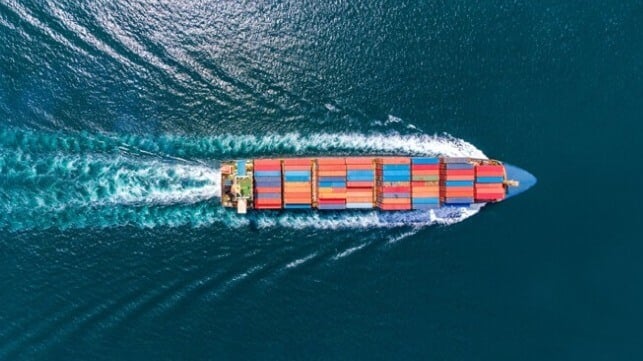Report: Green Corridors Face “Feasibility Wall” Due to Fuel Costs

A new report warns that a “feasibility wall” could jeopardize the significant progress being made for the adoption of green corridors, a key part of efforts to support sustainable shipping. The Getting to Zero Coalition and the Global Maritime Forum report that the lack of policies to bridge the cost of switching to zero-emission fuels has emerged as the number one bottleneck creating a “feasibility wall” risking the implementation of the concept.
The initiative to form green corridors as a way to support and encourage the adoption of sustainable fuels and new technologies was one of the cornerstones at the UN’s COP 26 event in Scotland in November 2021. A total of 22 nations signed the initial decree, pledging to support the launch of net-zero corridors.
The Annual Progress Report on Green Shipping Corridors 2024 released today, November 19, highlights significant growth in programs seeking to launch the corridors. It reports the number of initiatives increased by 40 percent in 2023 with a total of 62 initiatives globally.
The first demonstration took place in the Baltic this summer. Viking Line ran two of its ferries, Viking Grace and Viking Glory, fueled exclusively with liquid biogas. The Baltic emerged as one of the early proponents of the green corridor concept while there are also proposals for long-distance runs such as between Singapore and Rotterdam, which was first announced in August 2022.
The report highlights that six frontrunning initiatives are now preparing for real-world implementation. They note that these would provide a blueprint for green corridors worldwide. They highlight that a third of the proposed corridors have advanced to a new phase of exploration, including feasibility studies, implementation roadmaps, and cost assessments.
“Green shipping corridors have an essential role to play in accelerating zero-emission shipping. This year saw a handful of advanced corridors setting the pace, but continued progress is not inevitable,” said Jesse Fahnestock, Director of Decarbonisation at the Global Maritime Forum. “If industry and national governments make a concerted effort to share the costs and risks associated with new fuels, these leading corridors could together generate a breakthrough for zero-emission shipping before 2030.”
The cost of green fuels and the premium over traditional fuels is an often-cited barrier with many in the industry calling for efforts to bridge the gap. The corridor concept was to create significant demand to encourage investment in the production and distribution of new fuels. The report concludes that progress could stall without urgent action from governments to overcome the cost challenges.
The groups warn that the initiative “initiatives risks hitting a ‘feasibility wall’ if the cost of transitioning to sustainable energy sources is not urgently addressed by national policy incentives. This lack of national policy to bridge fuel costs is now the number one bottleneck and will soon limit the development of green corridors.”
The six frontrunning initiatives they believe could require over two million tonnes of hydrogen-based fuel per year by 2030.
The report calls on national governments to step up support and help unlock the business case for alternative energy, such as hydrogen-based fuels. With an increased number of governments focusing on incentivizing the adoption of hydrogen in multiple sectors, they write that providing shipping-specific support could catalyze both national hydrogen economies and the decarbonization of the maritime sector.
They are making five recommendations to ensure progress on the green corridor initiative. They believe the cost gap could be addressed by tapping into existing schemes designed to support hydrogen adoption. Furthermore, they also call for the development of innovative commercial agreements for fuel procurement and chartering within the green corridors and additional government efforts to encourage participation as well as financing policies.
Maersk as it launched its first large dual-fuel methanol containerships this year repeatedly cited the cost differential and lack of supply as major concerns for alternative fuels. At the International Maritime Organization’s MPEC committee meeting this year, member states were also called on to support a carbon pricing mechanism to support R&D and close the price gap between traditional and alternative fuels. This industry has highlighted for years the cost gap as a major impediment to the early adoption of alternative fuels.
